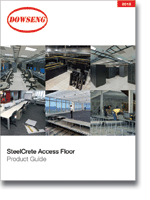What is LEED? |
|
 |
The U.S. Green Building Council’s (USGBC)
Leadership in Energy and Environmental Design (LEED®) program is a leading-edge system for designing, constructing,
operating and certifying the world’s greenest buildings.
|
How does LEED work? |
|
|
LEED is a point based system where building projects earn LEED points for satisfying specific green
building criteria. Within each of the seven LEED credit categories, projects must satisfy particular
prerequisites and earn points.
The five categories include Sustainable Sites (SS), Water Efficiency (WE), Energy and Atmosphere (EA),
Materials and Resources (MR) and Indoor Environmental Quality (IEQ). An additional category,
Innovation in Design (ID), addresses sustainable building expertise as well as design measures not
covered under the five environmental categories. The number of points the project earns determines the
level of LEED Certification the project receives. LEED certification is available in four progressive levels
according to the following scale:
There are 100 base points; 6 possible Innovation in Design and 4 Regional Priority points.
Certified 40–49 points
Silver 50–59 points
Gold 60–79 points
Platinum 80 points and above
|
|
Dowseng® and LEED |
|
|
Dowseng® SteelCrete Access Floor can achieve LEED credit points in two sectors: (1) Materials & Resources, (2)
Environment Quality.
|
|
LEED Credit
|
LEED Requirements
|
Dowseng® SteelCrete Access Floor Compliance
|
LEED Points
|
Materials & Resources Credit 1.3
|
Building Reuse: Maintain 50% of Interior Non-Structural Elements
|
Dowseng® SteelCrete Access Floor maintains more than 95% good elements for building reuse.
|
Contributes to 1 point
|
Materials & Resources Credit 4.1
|
Use materials with recycled content total of 10%, based on cost of the total value of the materials in the
project.
|
Dowseng® SteelCrete Access Floor contains recycled content in excess of the 10% credit requirement.
|
Contributes to 1 point
|
Indoor Environmental Quality Credit 2
|
Increase breathing zone outside air ventilation rates to all
occupied spaces by at least 30% above the minimum rates required by ASHRAE Standard 62.1-2004 as determined by
EQ Prerequisite 1
|
A variable air volume UFAD system does exactly that it delivers fresh air from below directly to occupants’ six-foot breathing zone. As the fresh air enters the zone it replaces existing contaminated air (rather than diluting it). Pollutants and stale air in the zone are carried to the ceiling by natural convection, where they are removed through return outlets.
|
Contributes to 1 point
|







